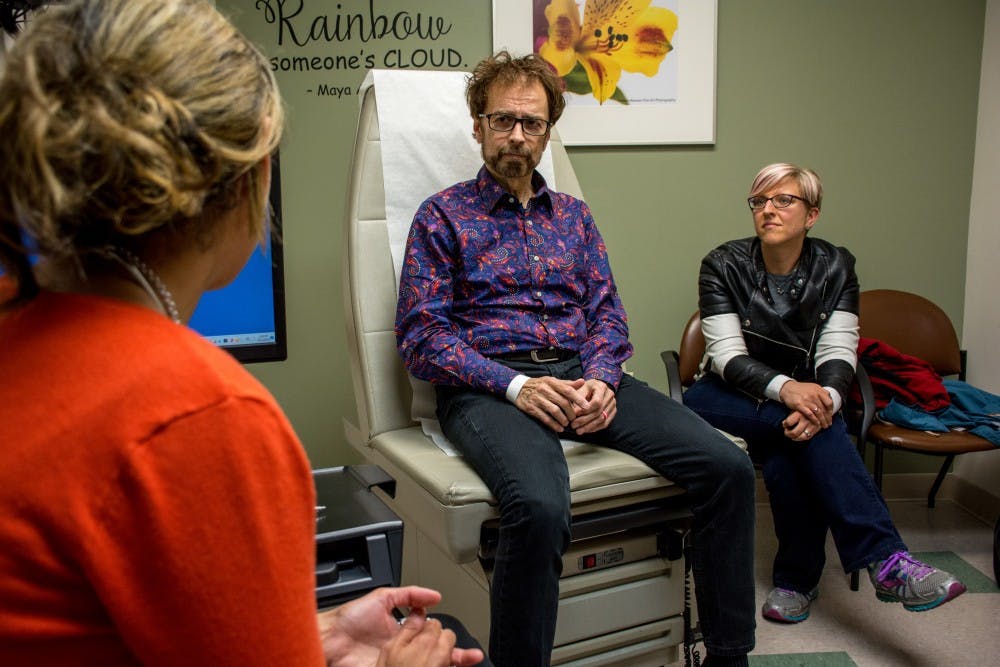In 2018 alone, 610,000 Americans will die from cancer. In preparation for cancer control month, The Daily News shadowed and sat down with Ball State professors to reflect on their past and continuing journeys with cancer.
In the brisk October morning, Stan Sollars quickly walked through the automatic sliding glass doors into the almost too-bright lobby. He took a seat in the pale blue and green chairs that are meant to be comforting, but the lumps didn’t help overcome the anxiety that comes with waiting. He put his arm around his nervous wife. “It’s going to be fine,” he said. “We’ve done this before.”
He walked through the labyrinth that was Indiana University Health University Hospital, never even looking where he’s going. He clutched the “football,” the giant accordion-style folder that houses all of his medical information to his side. He smiled and gave an animated hello to the receptionist, greeting her like he would an old friend. She smiled, the blue light from the computer screen reflecting in her glasses.
She knew him.
They all knew him.
They had seen him more than 40 times in the last three years.
He took a seat in the familiar chairs. He clutched a large water bottle that he purchased in anticipation for the day’s events. He explained what his body was about to endure.
“I have to drink a liter of water so that I can flush out all of the radioactive stuff as quickly as possible,” Sollars said.
A liter may seem like a lot, but to Sollars, a couple extra trips to the bathroom is a small price to pay for his life. The radiologist called him to the back. He walked past a patient left in the hallway, too weak to lift his head off the pillow. In a cold room, he showed off the machine that would soon send an army of X-ray waves and radiation into his body, scanning for any signs of a foreign object. Sollars lay still, the machine whirring around him, waiting for any signal of something that could again consume his life.
In the reception room, his wife fought back the tears that were perched just behind her lids, threatening to tumble over the edge.
“There's always a fear that it will come back,” Allison Pareis, Sollars’ wife, said. “That's why I always get really antsy on scan days. I mean, he's fine and I don't have any reason to really think that there's a problem, but it's a human thing just to have that little thing that says, ‘What if, what if, what if.’”
Sollars, a Ball State lecturer of telecommunications, isn’t alone in his fight. He is just one of the 1.8 million U.S. citizens who get a cancer diagnosis every year, according to the National Cancer Institute. Of those, 67 percent will still be alive five years down the road, up 17 percent from 1974.
Of the estimated 1.8 million, nearly 610,000 will die.





